| Author |
 Replies: 1,028 / Views: 215,527 Replies: 1,028 / Views: 215,527 |
|
|
|
Valued Member
Canada
19 Posts |
|
|
I found these three Catalan vignettes related to the neighbourhood of Gracia which our host knows so well -all published during the Civil War. 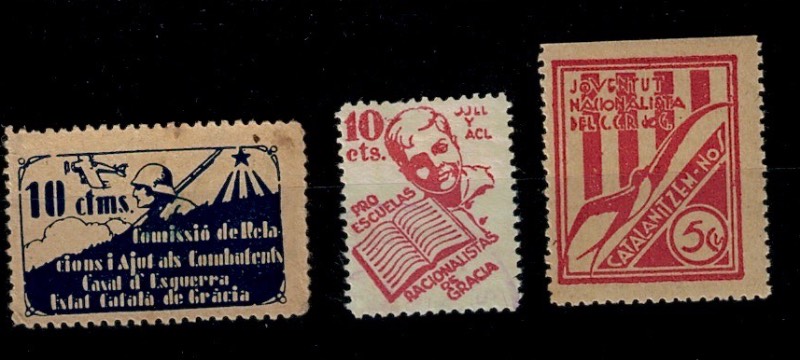 |
Send note to Staff 
|
| Edited by Mac-Pap - 08/28/2020 9:33 pm |
|
|
Pillar Of The Community
2302 Posts |
|
|
Three very interesting cinderellas issued in the old town of Grącia (since 1897 a district of Barecelona)during the 1936-39 war.
The first, issued by the Catalan nationalist party "Esquerra Republicana de Catalunya-Estat Catalą" is for collecting money for the boys of Grącia at the battle front.
The second (written in Spanish), seems to be issued by an anarchist organisation (JJLL= Juventudes libertarias) is to help free, non-church schools.
The third, issued by the Catalan nationalist organisation "Cercle Catalą Republicą de Grącia" encourages the Catalan awareness of people. |
Send note to Staff 
|
|
|
Valued Member
Canada
19 Posts |
|
|
Greetings! Today, I'm happy to share a set of three vignettes from the town L'Hospitalet de Llobregat (part of Barcelona) which were used to raise funds for "passive defence", i.e., the building of shelters, especially, that were used by the civilian population to escape fascist bombings during the Spanish Civil War. Typically, these vignettes show a plane and a falling bomb. Many different types of such vignettes from different Catalan localities were made at the time.  |
Send note to Staff 
|
|
|
Pillar Of The Community
2302 Posts |
|
|
3 very interesting cinderellas issued at l'Hospitalet de Llobregat. Now, it's the second Catalan town, with 265.000 inhabitants. It's so close to Barcelona, that there are many streets with one side on each city. But, both are independent cities with separate councils (it's who we Catalans do things!) and very diferent minded. This, is not unusual in Western Europe, where you can find streets with sides belonging to two diferent countries. |
Send note to Staff 
|
|
|
Pillar Of The Community
2302 Posts |
|
|
Just bought today, and shown some time ago, but with different colours. 1913, Barcelona, II Spanish Congress on Colonial and Trade Geography (those, were the times!). It shows a XIV century Catalan report of an expedition to present Gambia River ("Riu de l'Or" = River of Gold, for our ancestors) with the date August 10th 1346. 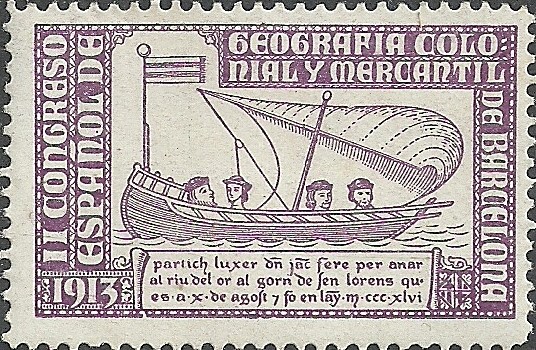 |
Send note to Staff 
|
|
|
Pillar Of The Community
2302 Posts |
|
|
Valued Member
Canada
19 Posts |
|
|
Pillar Of The Community
2302 Posts |
|
|
Pillar Of The Community
2302 Posts |
|
|
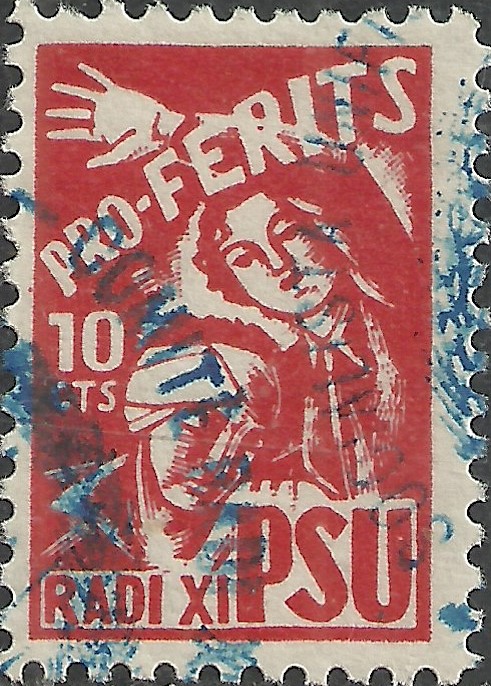 1936-39 war. "Pro-ferits" (For the injured). Issued by the PSU: Partit Socialista Unificat (Unified Socialist Party), which was born in 1936 from the unification of some Catalan socialist and comunists parties. It bears a "cancellation" with the same text as of the cinderella. Having gum, it's very likely that it wa used t aknowledge the payement of a contribution. |
Send note to Staff 
|
|
|
Valued Member
Canada
19 Posts |
|
|
Greetings from Canada, Joan I hope you are staying safe. The interesting civil war vignette you recently posted inspired me to follow up with more vignettes from the PSUC (Unified Socialist Party of Catalunya). First, I show again your vignette, but in a block of 6 which shows the full details of the pre-cancellation. This pre-cancellation can also be seen on the Radi V vignette. Sometimes, these pre-cancellations appear on the back. All the vignettes have in common the « Radi » (radio) theme. They were emitted, I assume, in cooperation or by the actual radio stations of the PSUC to raise money. Radio stations were very important for propaganda during the Spanish civil war and played a central role (remember, no TV!). My challenge to you: do you have more information on these radio stations? Where they were located? The stamps show Radi I, IV, V, VI, XI, XII, XIII. Best regards, Giovanni 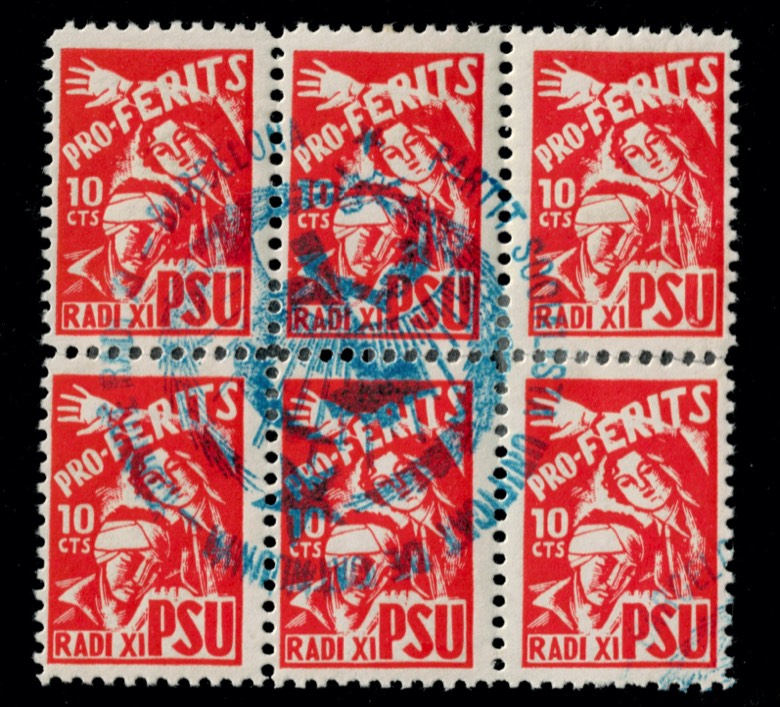 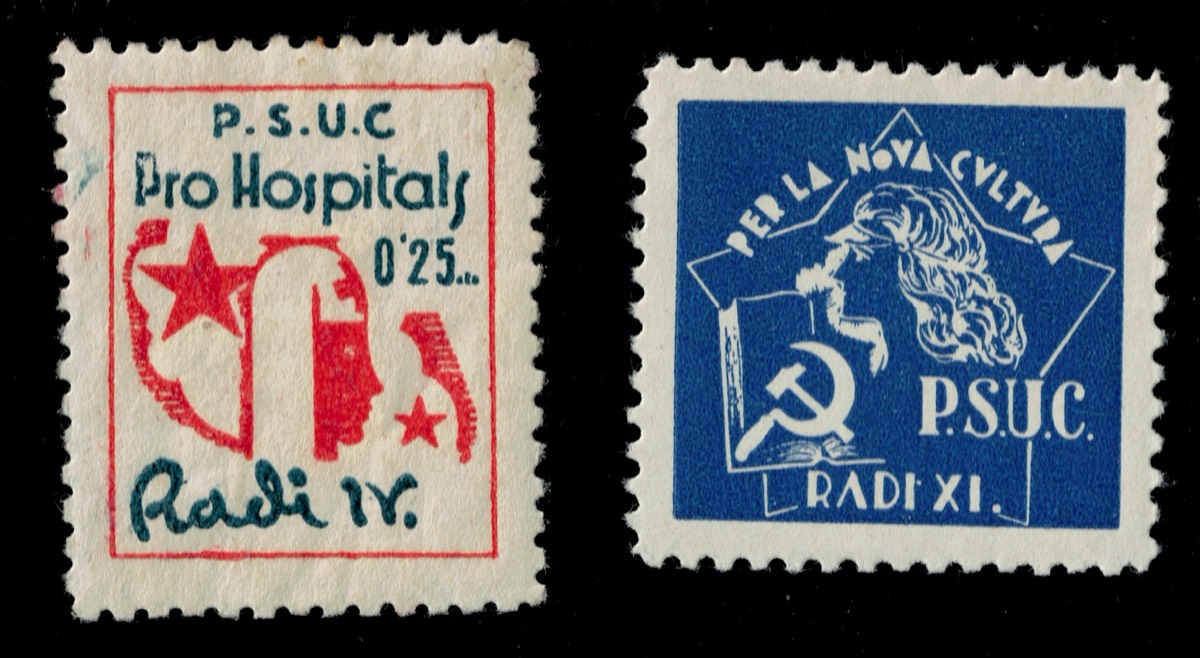 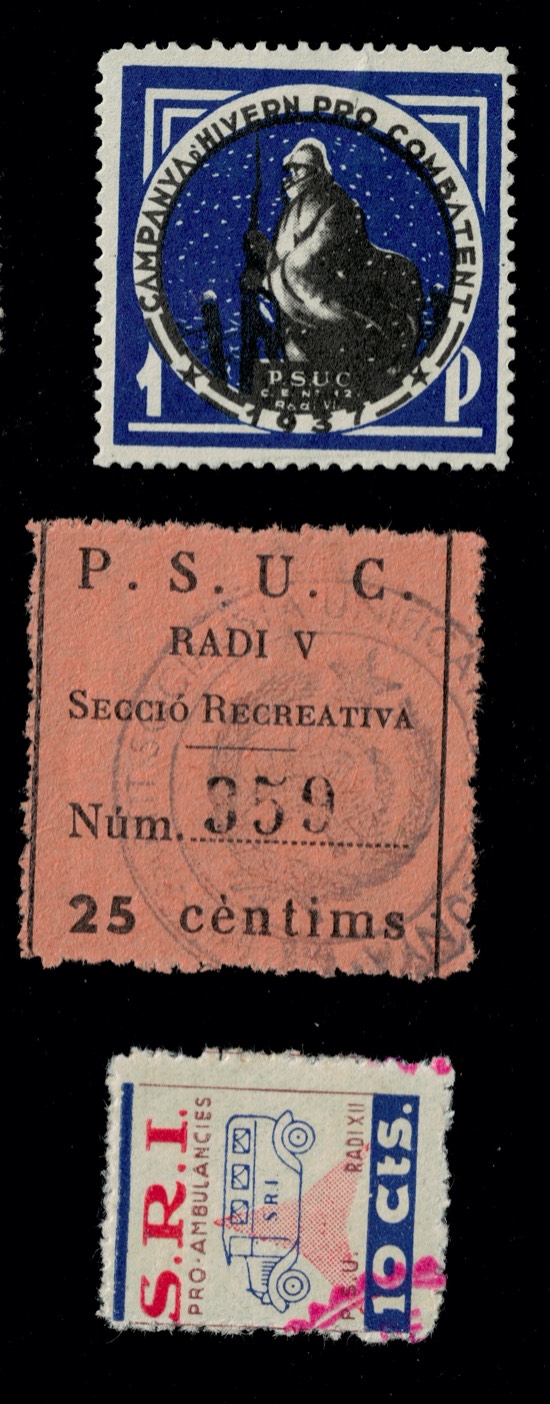 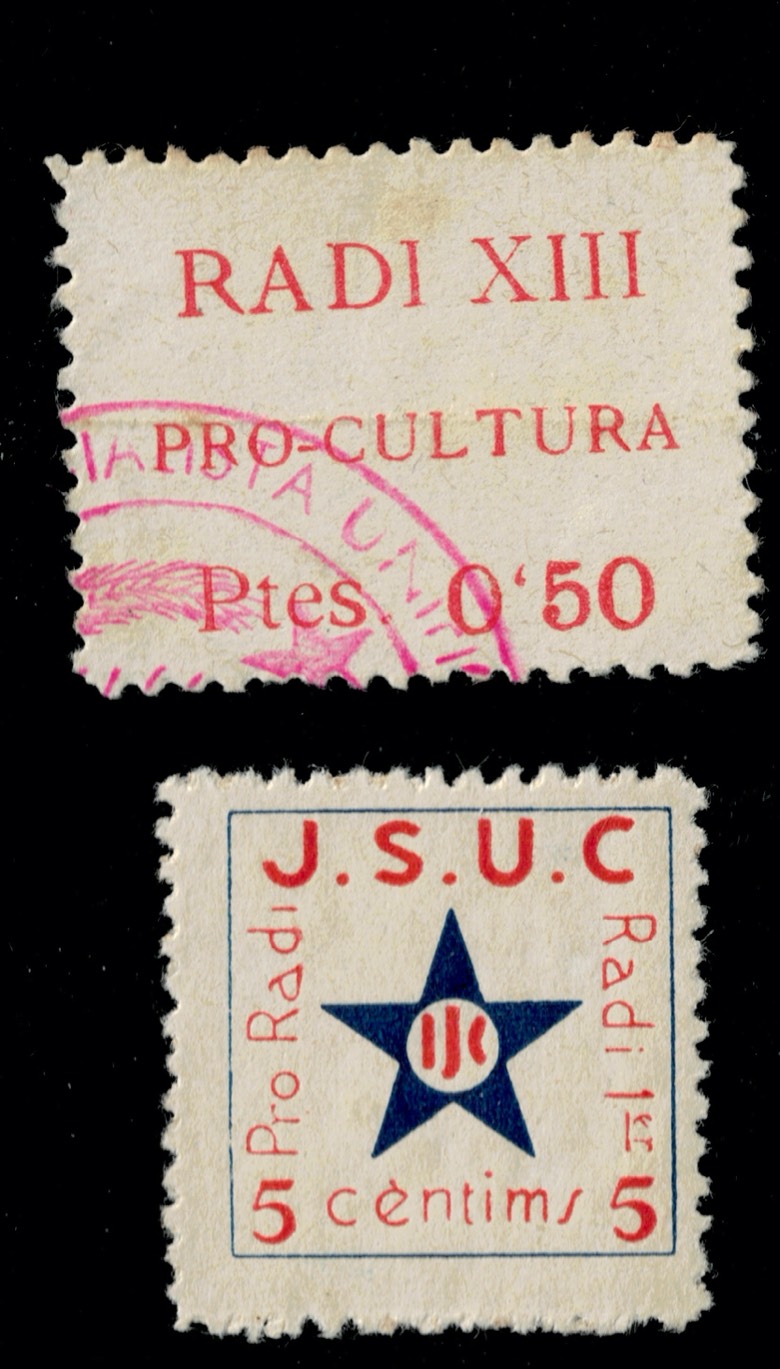 |
Send note to Staff 
|
| Edited by Mac-Pap - 11/13/2020 2:42 pm |
|
|
Valued Member
Canada
19 Posts |
|
|
p.s. the last stamp with the blue star is actually from the youth (joventut, in Catalan) division of the PSUC, in association with the International Communist Youth (IJC).
As the Spanish war evolved and western democracies abandoned the rightfully and democratically elected government of Spain, the communist party through Russian influence, became stronger and stronger in Spain. |
Send note to Staff 
|
| Edited by Mac-Pap - 11/13/2020 4:06 pm |
|
|
Pillar Of The Community
2302 Posts |
|
|
Hi Giovanni. I hope that you're ok, as I'm. Thank you very much for the images and the information, although I disagree with your statement:
"All the vignettes have in common the « Radi » (radio) theme. They were emitted, I assume, in cooperation or by the actual radio stations of the PSUC to raise money. Radio stations were very important for propaganda during the Spanish civil war and played a central role (remember, no TV!)."
In Catalan, "radi" doesn't mean "radio". In our language "radio" is "rądio" not "radi". In my view "radi" means a teritorial division, perhaps "districte" (district). It would make sense to speak,as you can see on the last cinderella "radi 1er", wher 1er stands for "primer" (first) on a radio station it wouldn't have any coherence. Furthermore, rądio is a feminine word, so "first raio" should be "primera rądio" or (as you put) "radi 1ra" nor "radi 1er".
Plus the city of Barcelona, had 13 districts, in general designed by using Roman numbers (as on the cinderellas). Here, no one has ever named radio stations by using Roman numbers. But we've always spoken of "Districte Ier" or "Districte XI". |
Send note to Staff 
|
|
|
Valued Member
Canada
19 Posts |
|
|
Joan, that is great!
My google translator said radi=radio, which induced me in error. Your comment really clarifies things for me. I actually initially thought these had to be districts of Barcelona as these Cinderellas are usually classified as being from Barcelona.
Then, could you give me the names of the 13 districts? I would really like to know. Do you know if they are the same now as in 1936-1939?
Thank you for asking: my family and I are doing fine. Where I live, COVID-19 is a big concern but infections remain low. About 40-80 people per day in a city of 1 000 000.
|
Send note to Staff 
|
| Edited by Mac-Pap - 11/13/2020 4:19 pm |
|
|
Pillar Of The Community
2302 Posts |
|
|
Barcelona Districts (up to 1980). The city is always seen from the sea.
I .- Ciutat Vella (right of the Rambles)
II.- Poble Sec-Montjuļc
III.- Sarrią-Sant Gervasi
IV.- Dreta de l'Eixample
V.- Raval (left of the Rambles)
VI Esquerra de l'Eixample
VII.- Sants-Hostafrancs
VIII.- Grącia
IX.- Sant Andreu de Palomar
X.- Sant Martķ de Provenēals
XI.- Les Corts-Pedralbes
XII.- Guinardó- Vall d'Hebró
I can't find a XIII district, I was confused. Perhaps it was a short-lived division.
Since about 1980, our city has 10 districts
|
Send note to Staff 
|
|
|
Valued Member
Canada
19 Posts |
|
 Replies: 1,028 / Views: 215,527 Replies: 1,028 / Views: 215,527 |
|
